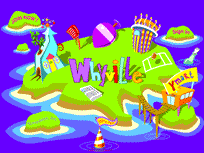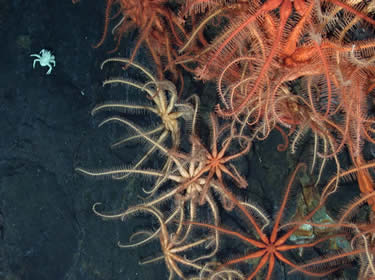Ocean Science Enters the Virtual World of Whyville

Planning oceanographic cruises, asking questions and conducting experiments, exploring ocean habitats, collecting, analyzing, and discussing data with peers. This could be a description of a typical day at any major oceanographic institution, but this type of work (or play) will be taking place in Whyville – the successful online learning site for kids (www.whyville.net).
Whyville is a dynamic online learning community for children ages 8 to 15. Of these users, 67% are female, a demographic that is increasingly difficult to interest in science and math. The creative team at Numedeon launched Whyville in 1999 and continues to add educational activities based on the inquiry approach to learning – the theory that people learn better by actively doing and trying rather than passively reading or watching. To date, Whyville has over 1.4 million registered users. And these users actively participate in the site: 25,000 kids from all over the world gather daily on Whyville and generate 50 million page views a month. A sense of identity and ownership keeps the average Whyville citizen on the site nearly three hours every month, making Whyville one of the “stickiest” sites on the Internet.
The Woods Hole Oceanographic Institution’s involvement with Whyville came about as a result of one of COSEE-NE’s programs – the Science of Learning seminar series. This yearly seminar for scientists seeks to explore the science and research behind education theory and practice. The last seminar featured Dr. James Bower, a computational neurobiologist at the University of Texas, San Antonio. Dr. Bower spoke to a WHOI audience about his 17+ years in science education reform – the results of which lead him to found Whyville. The talk was incredibly well received and the opportunity for a mutually beneficial WHOI-Whyville partnership was recognized.
A generous donation enabled WHOI to move forward to create the Whyville Oceanographic Institution (WhOI). The WhOI presence in Whyville is currently comprised of land based facilities, a dock, and two fantastic underwater laboratories. Additional labs and other facilities will be added regularly starting this spring with the addition of a new activity related to phytoplankton.
The infrastructure developed on Whyville to create WhOI does more than help to educate students about the importance of the oceans and ocean research; it is also helping scientists. WhOI was designed in part to provide an education outlet for WHOI scientists looking to address the broader impacts of their proposed research. By creating a WHOI presence on Whyville, scientists can tap into an already established successful site with a dedicated audience and the expertise of the creative team at Numedeon. Proposals have already been submitted to NSF using Whyville as an outlet to effectively engage middle school students in learning about oceanographic research.
See for yourself by visiting Whyville (www.whyville.net). There’s no need to register, you can visit as a guest. WhOI can be reached from the beach (naturally) or by taking the Whyville bus (under the drop down menu).
Deep Sea Vent Exploration through Whyville

Colony of Brisingid Seastars from TowCam hydrothermal vent field, Lau Basin, SW Pacific Ocean. Image captured by digital cameras operating on the Jason2 ROV (Remotely Operated Vehicle), Woods Hole Oceanographic Institution. Copyright: Margaret K. Tivey, Woods Hole Oceanographic Institution
A new activity for students visiting the online learning environment Whyville.net was launched in Spring 2008. This activity builds an understanding of hydrothermal vent environments (their chemistry, biology, and physical characteristics) as well as emphasizing the process of scientific discovery. Students work individually using oceanographic equipment to discover and sample hydrothermal vent communities. This information is added to a centralized map of the world’s oceans, allowing students to also work collaboratively to create knowledge for their virtual community. The activity is dynamic and changes over time, sustaining interest and allowing for opportunities to make new “discoveries”. The scientific expertise for this project wascontributed by many experts studying hydrothermal vents. Doctoral candidate Paul Craddock, in WHOI's Marine Chemistry and Geochemistry department, coordinated this effort and served as the liaison for the project .